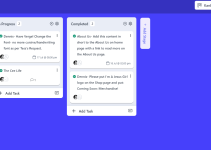In the ever-evolving world of email marketing, staying ahead of the curve is crucial for businesses to ensure their messages reach their intended audience. Recently, two major email providers, Google and Yahoo, announced a significant update to their email authentication protocols, rolling out stricter requirements aimed at curbing spam and enhancing email security. This change, taking effect on February 1, 2024, will primarily impact businesses that send large volumes of emails.
Why is Email Authentication Important?
Imagine your inbox inundated with unsolicited promotional emails, phishing attempts, and other malicious content. Email authentication acts as a gatekeeper, verifying the legitimacy of incoming emails and ensuring they originate from authorized senders. This not only protects users from harmful emails but also improves deliverability for legitimate senders like businesses.
What Are the New Authentication Requirements?
Google and Yahoo are implementing three key changes:
- Mandatory DMARC Enforcement: DMARC (Domain-based Message Authentication, Reporting & Conformance) empowers domain owners to specify how email receivers handle unauthenticated emails from their domain. Previously, DMARC adoption was recommended but not enforced. Starting February 1st, DMARC adoption becomes mandatory for bulk email senders (those sending over 5,000 emails per day). Businesses must implement a DMARC policy with at least a “p=reject” or “p=quarantine” policy to ensure unauthorized emails are rejected or quarantined.
- Stricter Spam Complaint Thresholds: Both Google and Yahoo are lowering their tolerance for spam complaints. Senders exceeding a 0.3% spam complaint rate will face deliverability issues. Businesses must prioritize email list hygiene, segmentation, and content relevance to minimize spam complaints and maintain good sender reputation.
- Improved Unsubscribe Functionality: Making it easier for users to unsubscribe from email lists is essential. The new regulations require businesses to provide clear and functional unsubscribe mechanisms within their emails. This includes a one-click unsubscribe option and honoring unsubscribe requests promptly.
How to Prepare for the Change:
- Check DMARC Compliance: If you send bulk emails, ensure you have a DMARC policy set up with at least a “p=reject” or “p=quarantine” policy. You can use Google Postmaster Tools or other email marketing platforms to configure DMARC.
- Monitor Spam Complaint Rates: Regularly track your spam complaint rates and take corrective actions if they exceed the 0.3% threshold. Analyze email content, target audience, and list hygiene practices to identify and address potential spam triggers.
- Refine Unsubscribe Processes: Ensure your emails have clear and easily accessible unsubscribe links. Honor unsubscribe requests promptly to avoid user frustration and potential spam flags.
- Stay Informed: Keep yourself updated on the latest email authentication protocols and best practices. Resources like Google Postmaster Tools and Yahoo Sender Guidelines offer valuable insights and support.
Conclusion:
The upcoming changes from Google and Yahoo represent a positive step towards a cleaner and more secure email ecosystem. By proactively preparing your email campaigns to comply with the new authentication requirements, you can ensure your messages reach the right audience while maintaining a positive sender reputation. Remember, the key is to prioritize deliverability, user experience, and responsible email marketing practices. By taking these steps now, you can ensure your email marketing efforts continue to thrive in the evolving landscape. Subscribe to dennis.tips for more insightful tips.





